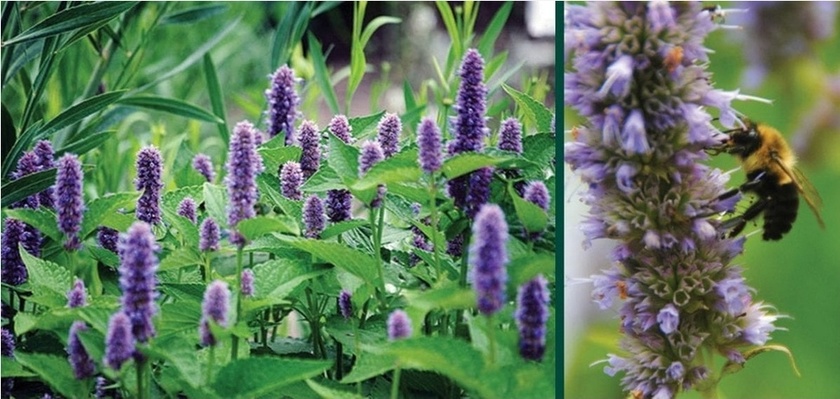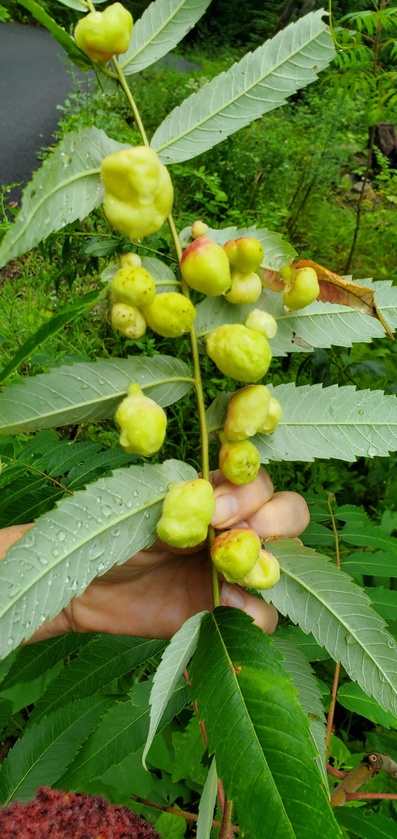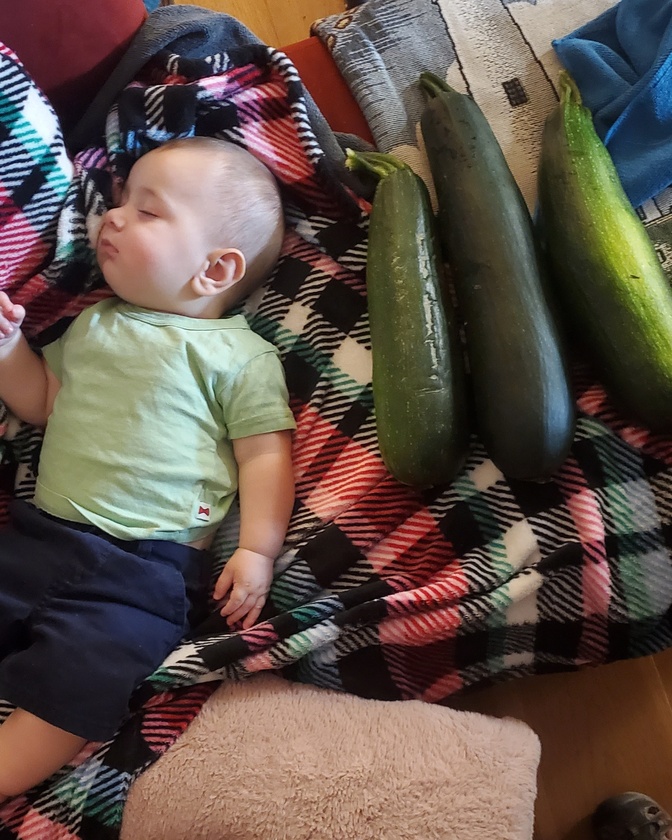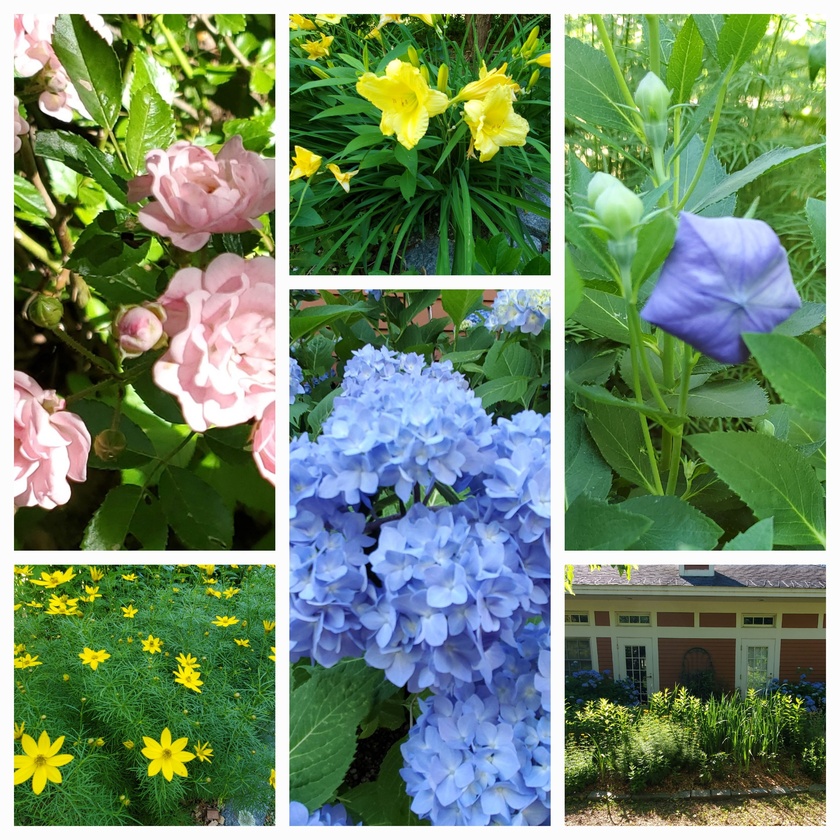This morning I planted some in my starter trays.
I am really looking forward to having them in my perennial garden.
Anise-Hyssop (Agastache ssp)
Each year the International Herb Association selects one herb to celebrate as the Herb of the Year. Selected plants much be outstanding in at least two of the three major categories: culinary, medicinal or decorative. The 2019 Herb of the Year, Anise-Hyssop, scores well in all three categories.
Culinary
Both the flowers and leaves of Anise-Hyssop are edible. The leaves have a pleasant mild licorice/anise flavor while the flowers add a hint of floral sweetness. Harvested fresh, leaves can be added to summer pasta dishes or cold vegetable soups. Fresh leaves and flowers are also excellent in salads, with fruit, in cold drinks, in jellies, or used as an attractive edible garnish.
When dried, Agastache makes a wonderful licorice/mint tea. To dry:
Harvest in the morning after dew has dried but before hot sun volatilizes fragrant oils.
Sunlight destroys flavor so dry in a dark, warm location.
Hang bunches upside down, bound with rubber band, or dry individual leaves and flowers on drying screens.
Honey
Anise-Hyssop has tremendous value as a nectar-rich pollinator plant. While many beneficial pollinators are attracted to its flowers, of note is its appeal to honeybees. Many beekeepers will grow this plant near their hives because honey made by bees that feed on it is exceptionally flavorful.
Medicinal
Tea made from Anise-Hyssop leaves is believed to relieve coughs, clear congestion, ease digestive upset, and promote restful sleep. Historically, a poultice of the leaves was used to treat burns. Modern clinical research has shown that the oils contained in Agastache have antiviral, antifungal and anti-inflammatory properties.
Decorative
Agastache foeniculum and A. scrophulariaefolia are two species of Agastache that are native to our Midwestern grasslands. Blue Hyssop (A. foeniculum) is highly decorative. It bears abundant blue spire flowers on 36” stems from mid to late summer. There are several cultivated forms, including ’Blue Fortune’, that have been selected for profusion of bloom, superior flower color and slightly smaller habit. Giant Purple Hyssop (A. scrophulariaefolia) bears 48”-60” spires of very pale lavender/near-white flowers that are not as showy as Blue Hyssop but offer all of the other attributes.
Both plants are excellent for attracting butterflies and beneficial pollinators to the garden. The seeds are also an important food source for native birds. Their fragrant foliage is left undisturbed by deer & rabbits.
Agastache tends to be a short lived perennial, but it will self-sow readily on open ground. This makes Anise-Hyssop a good choice for a naturalized or cottage garden, where it can “dance” from place to place over the years.
There are a lot of expressions that we hear now and then; most we think we know the origin of, some we don't. For the most part we just don't ponder the origin of commonplace expressions because they are... common. The first thing I discovered when beginning to read this little gem of a book, was not only hadn't I considered where many common sayings come from, but my preconceived idea of their origin was actually wrong! Kinda embarrassing, but guessing I may not be alone in this. I thought it would be of value then to share some tidbits from this book. Audio format is nice, as you can multitask while listening to this. This is my first attempt at recording reading a book, so any constructive criticism is welcome!
There are a lot of expressions that we hear now and then; most we think we know the origin of, some we don't. For the most part we just don't ponder the origin of commonplace expressions because they are... common. The first thing I discovered when beginning to read this little gem of a book, was not only hadn't I considered where many common sayings come from, but my preconceived idea of their origin was actually wrong! Kinda embarrassing, but guessing I may not be alone in this. I thought it would be of value then to share some tidbits from this book. Audio format is nice, as you can multitask while listening to this. This is my first attempt at recording reading a book, so any constructive criticism is welcome!
There are a lot of expressions that we hear now and then; most we think we know the origin of, some we don't. For the most part we just don't ponder the origin of commonplace expressions because they are... common. The first thing I discovered when beginning to read this little gem of a book, was not only hadn't I considered where many common sayings come from, but my preconceived idea of their origin was actually wrong! Kinda embarrassing, but guessing I may not be alone in this. I thought it would be of value then to share some tidbits from this book. Audio format is nice, as you can multitask while listening to this. This is my first attempt at recording reading a book, so any constructive criticism is welcome!
Cool! I've never noticed galls on staghorn sumac. Location: SE NH.
Melaphis rhois on Rhus typhina
https://bygl.osu.edu/node/1112





















